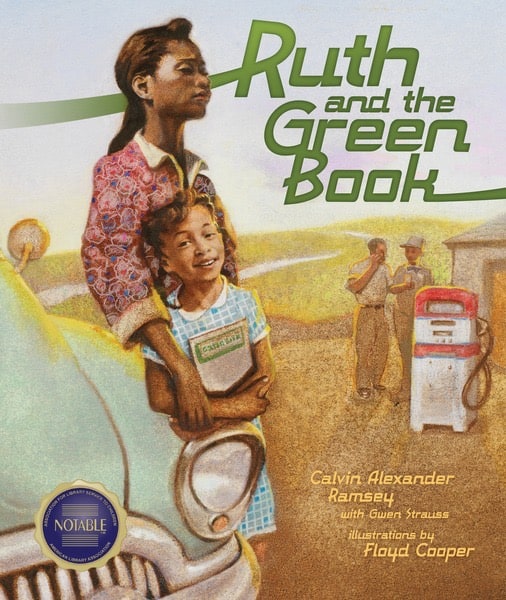Back in August, we published a story about the “Green Book” exhibit at the Gilmore Car Museum in Michigan. To refresh your memory, The Negro Travelers’ Green Book was published by a New York City mail carrier, Victor Hugo Green, who enlisted his fellow mail carriers around the country to help him compile and update lists of places — restaurants, hotels, gasoline stations — that would accommodate African-American travelers.
Ruth and the Green Book
By Calvin Alexander Ramsey with Gwen Strauss
| Published | 2010 |
| Publisher | Carolhroda Books |
| Format | Hardcover |
| Pages | 32 |
| ISBN | 9780761352556 |
| Purchase | Amazon |
About the time we were working on our story, The New York Times was publishing a pair of articles about photographers, playwrights and filmmakers who were documenting Green’s life and the impact his book had on black families during the Jim Crow era.
One of those working on such a project was Calvin Alexander Ramsey, a playwright from Atlanta who in 2010 had published a children book, Ruth and the Green Book.
The book, written with Gwen Strauss and with illustrations by Floyd Cooper, shares the story of Ruth, a girl from Chicago who was traveling with her parents to visit her grandmother in Alabama in the family’s brand new 1952 Buick.
“After driving for a long time,” the family stopped for gas, but the service station attendant wouldn’t let the family use the whites-only rest room.
“Mama and I had to go into the woods,” Ruth says. “I was embarrassed.”
They were informed there was no room at the inn for their kind when they stopped at a hotel, so they had to drive all night. Fortunately, Ruth’s mother had brought plenty of food because they also were refused service as restaurants.
In Tennessee, they stopped at the home of a man with whom Ruth’s father served during World War II. When the left the next month, the man told them they could buy fuel at a certain brand of stations, so they did. There, the service station attendant told the family about the Green Book, so they bought a copy for 75 cents, and the trip resumed.
Ramsey’s book may be written for children, but it also provides a way for parents (and grandparents) to start a discussion with those children about prejudice and civil rights and right and wrong and about a time that may now seem long ago, until you read today’s headlines or watch the news.







I grew up at the end of the Green Boook era, and for those who don’t know (most of you) the boook was the next most common book in Negro homes afterr the Bible. You really needed it then, though there are still times when it might come in handy. I grew up in The North, but there were (and still are) segregated facilities in every town in which I lived. I know there are a lot of people who will “let bygones be bygones” and all that, which is very easy if it wasn’t YOUR life that was being stepped on, YOUR father being insulted, YOU being stopped by cops just because of your skin color….wait: omit that last one. It’s still happpening.